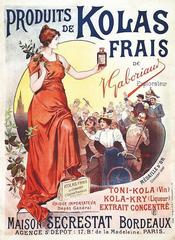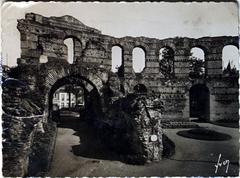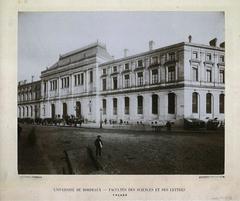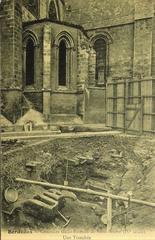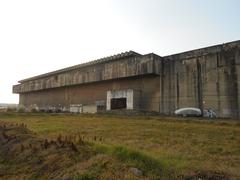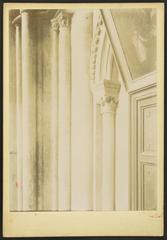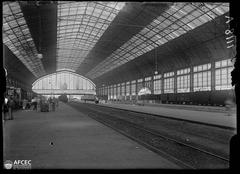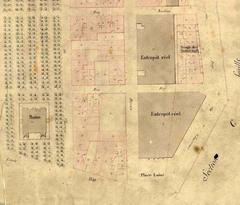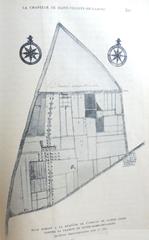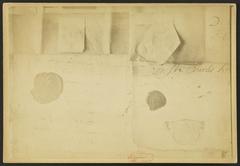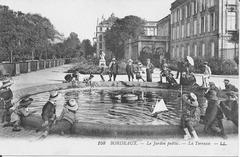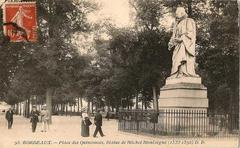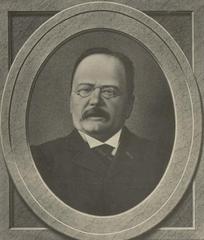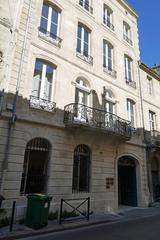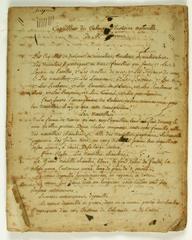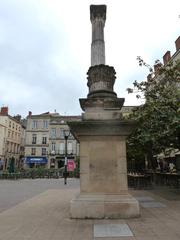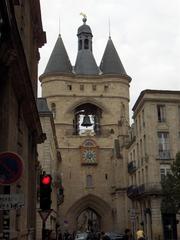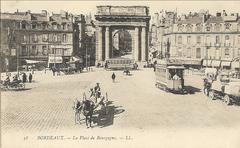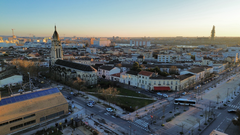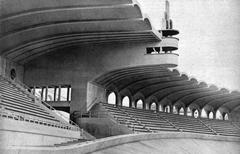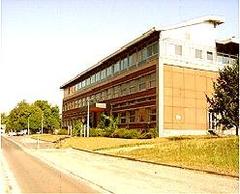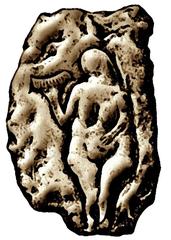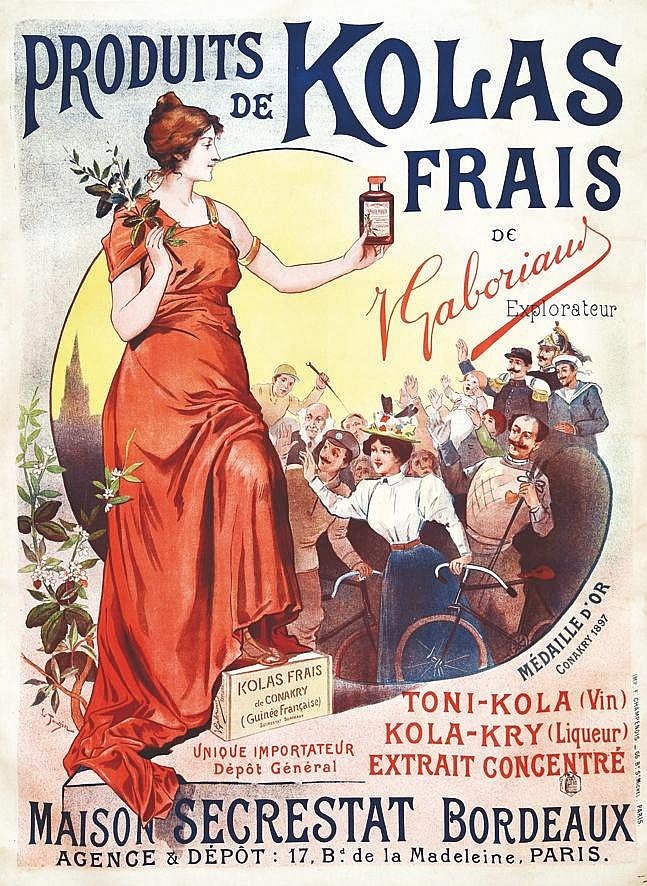
Distillerie Sécrestat Visiting Hours, Tickets, and Bordeaux Historical Sites Guide
Date: 14/06/2025
Introduction
The Distillerie Sécrestat is a landmark of industrial and cultural heritage in Bordeaux, France. Originally established in 1852 by Pierre Sécrestat, the distillery played a pivotal role in the city’s beverage industry—broadening its reputation beyond wine to include iconic spirits such as the Bitter Sécrestat. The building, a striking example of late 19th-century industrial architecture, today houses the Musée Goupil and stands as a protected Monument Historique. This comprehensive guide provides detailed information on the history, architecture, visiting hours, ticketing, accessibility, and nearby attractions, ensuring you make the most of your visit to one of Bordeaux’s most significant historical sites (C’est en France, Gralon, Bordeaux Tourism Official Site, POP Culture).
Table of Contents
- History and Origins
- Architectural Significance
- Decline, Preservation, and Transformation
- Visiting Distillerie Sécrestat: Practical Information
- What to Expect During Your Visit
- Nearby Attractions
- Visitor Tips and Safety
- FAQ
- Conclusion
- Sources and Further Reading
History and Origins
The roots of Distillerie Sécrestat date back to 1852, when Pierre Sécrestat launched a liqueur factory on Rue Notre-Dame. At a time when Bordeaux’s global reputation was built on wine, Sécrestat’s venture marked an important diversification. The distillery soon became renowned for its Bitter Sécrestat—a tonic created from gentian root and bitter orange peels, popular for its supposed medicinal and aperitif qualities (C’est en France).
By the late 19th century, growing demand led to the creation of a new, purpose-built facility at 40–50 cours du Médoc in 1898, designed by architect Ernest Minvielle. This expansion reflected Bordeaux’s industrial optimism and the increasing popularity of spirits and liqueurs, both in France and internationally.
The distillery’s reputation was further cemented by its wide product range, which included not only the Bitter Sécrestat but also liqueurs based on kola nut, Anisette, Cacao, Curaçao, and Cherry-Brandy. These products were lauded for their quality and exported widely, contributing to Bordeaux’s status as a center for fine beverages (C’est en France).
Architectural Significance
The 1898 distillery building remains a standout example of late 19th-century industrial design. Its neo-classical façade, crafted from brick and stone, features garlands of fruit, a balcony with volute consoles, and a prominent broken semicircular pediment. The building’s structure—three expansive levels, robust metal frameworks, and an elegant grand staircase—enabled large-scale production while projecting modernity and prestige (C’est en France, POP Culture).
The façade’s combination of stone and brick, symmetrical nine-bay organization, and large chimney evoke the tastes of the commercial bourgeoisie of the Second Empire. This industrial elegance is complemented by practical features such as the cement-lined cuverie, capable of storing up to 1.5 million liters of eau-de-vie—a demonstration of the era’s technological ambition (C’est en France).
Decline, Preservation, and Transformation
The distillery thrived until 1973, when changing consumer preferences and economic pressures led to its closure. Many of Bordeaux’s historic distilleries met a similar fate as the city’s focus shifted increasingly back to wine. However, the architectural and cultural value of the Distillerie Sécrestat ensured its preservation.
In 1991, the building was transformed into the Musée Goupil, dedicated to industrial imagery and the visual culture of the 19th and 20th centuries. The museum housed the Goupil photographic collection and other significant archives, linking Bordeaux’s industrial past with its artistic legacy (Gralon). As of the early 2020s, the Musée Goupil’s collections have been relocated to the Musée d’Aquitaine, but the historical building remains a protected Monument Historique, with its façades and roofs preserved (POP Culture, Actuacity).
Visiting Distillerie Sécrestat: Practical Information
Visiting Hours
- The site is generally not open for regular public tours, as it is now privately owned.
- However, it may participate in Bordeaux’s heritage open days or special cultural events.
- For the latest visiting opportunities, consult the Bordeaux Tourism Official Site or event calendars for updates.
Tickets & Admission
- Tickets for special events or heritage days are typically available through the official Bordeaux tourism platforms.
- Admission fees vary by event, with reduced rates for students, seniors, and groups.
Guided Tours and Accessibility
- Guided tours are available only during special events or by arrangement with local heritage organizations.
- The exterior façade and chimney can always be admired from the street.
- The interior is not generally accessible; check event details for accessibility options.
- The area around the building is wheelchair accessible, but interior access may be limited.
Location and Transport
- Address: 40–50 cours du Médoc, 33300 Bordeaux, France
- Nearest tram stop: Cours du Médoc (Tram Line B)
- Public parking: Available nearby
- Transport: The site is easily reachable by tram, bus, bike, or on foot from the city center (Bordeaux Uncovered, Infotbm).
What to Expect During Your Visit
- Admire the neo-classical industrial façade and historic chimney from the street.
- During special open days, guided tours may provide access to the interior, offering insight into the building’s unique history, architecture, and its transformation from a distillery to a museum.
- View historical photographs and architectural plans online or at the Musée d’Aquitaine, which now houses collections related to Bordeaux’s industrial heritage.
- The surrounding Chartrons district is renowned for its vibrant atmosphere, antique shops, and wine merchants, making it ideal for a full day of exploration.
Nearby Attractions
- Place de la Bourse: Iconic 18th-century square with the famous Water Mirror.
- La Cité du Vin: Bordeaux’s acclaimed wine museum.
- Musée d’Aquitaine: Home to extensive collections on Bordeaux’s regional and industrial history.
- Halles de Bacalan: Covered market for local gastronomy.
- Garonne riverfront: Perfect for strolling, cycling, or taking in the city’s views.
Pair your visit to Distillerie Sécrestat with these attractions for a rich experience of Bordeaux’s cultural and historical landscape (Nomadic Matt, Timeless Travel Steps).
Visitor Tips and Safety
- Language: French is the primary language, but English is widely spoken in tourist areas.
- Weather: Bordeaux weather can change quickly; bring a light jacket or umbrella.
- Transport: Always validate your ticket on public transport to avoid fines (Bordeaux Uncovered).
- CityPass: Consider the Bordeaux CityPass for savings on transport and attractions (Infotbm).
- Accessibility: For those with specific needs, contact venues ahead of time to confirm facilities.
- Safety: Bordeaux is generally safe, but standard precautions are advised in busy areas.
- Souvenirs: The nearby Chartrons district offers shops selling local spirits, wines, and artisanal products.
FAQ
Q: Is the Distillerie Sécrestat open for daily visits?
A: No, regular public access is not available. Special openings may occur during heritage days or cultural events.
Q: Can I buy tickets for tours?
A: Tickets are only available for special events and can be purchased through Bordeaux tourism platforms.
Q: Are there guided tours?
A: Guided tours may be offered during heritage events or by local heritage groups.
Q: Is the site accessible for people with reduced mobility?
A: The exterior is accessible, but the historic building’s interior may have limitations.
Q: What are other must-see nearby attractions?
A: Place de la Bourse, La Cité du Vin, Musée d’Aquitaine, and the Garonne riverfront.
Conclusion
The Distillerie Sécrestat encapsulates Bordeaux’s dynamic transition from a wine-focused city to a center of industrial innovation and artistry. Its preserved architecture and fascinating history offer visitors a unique glimpse into the city’s industrial and cultural evolution. While daily public access is limited, the site remains an essential stop for heritage enthusiasts, especially during special events. Enhance your visit with nearby attractions and make use of Bordeaux’s efficient transport and visitor services.
For up-to-date information on openings, events, and Bordeaux’s cultural scene, consult the Bordeaux Tourism Official Site and consider downloading the Audiala app for curated guides and travel tips.
Alt text: Distillerie Sécrestat building façade showcasing its late 19th-century industrial architecture in Bordeaux.
Alt text: Interior view of the Musée Goupil housed within the Distillerie Sécrestat building.
